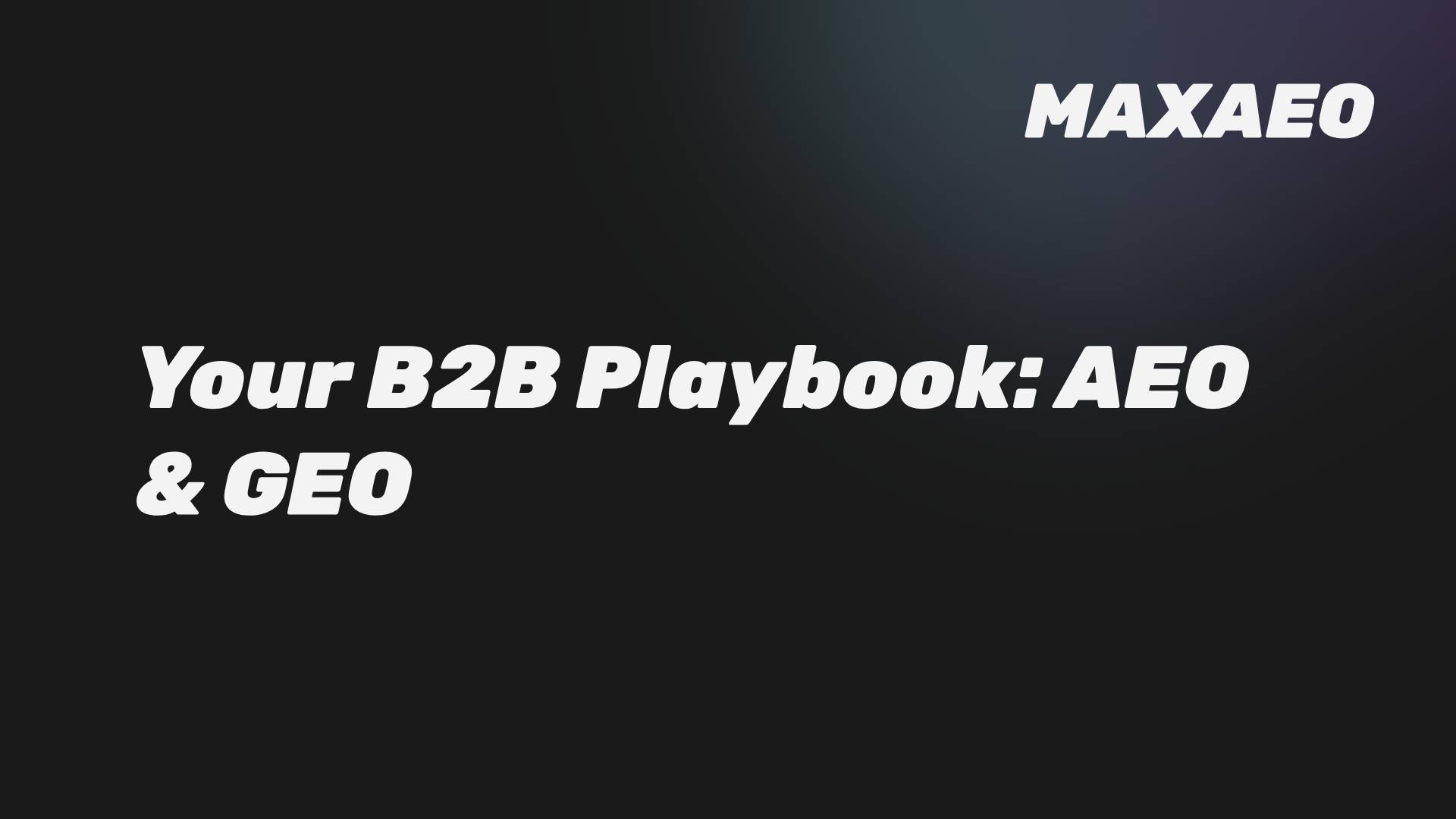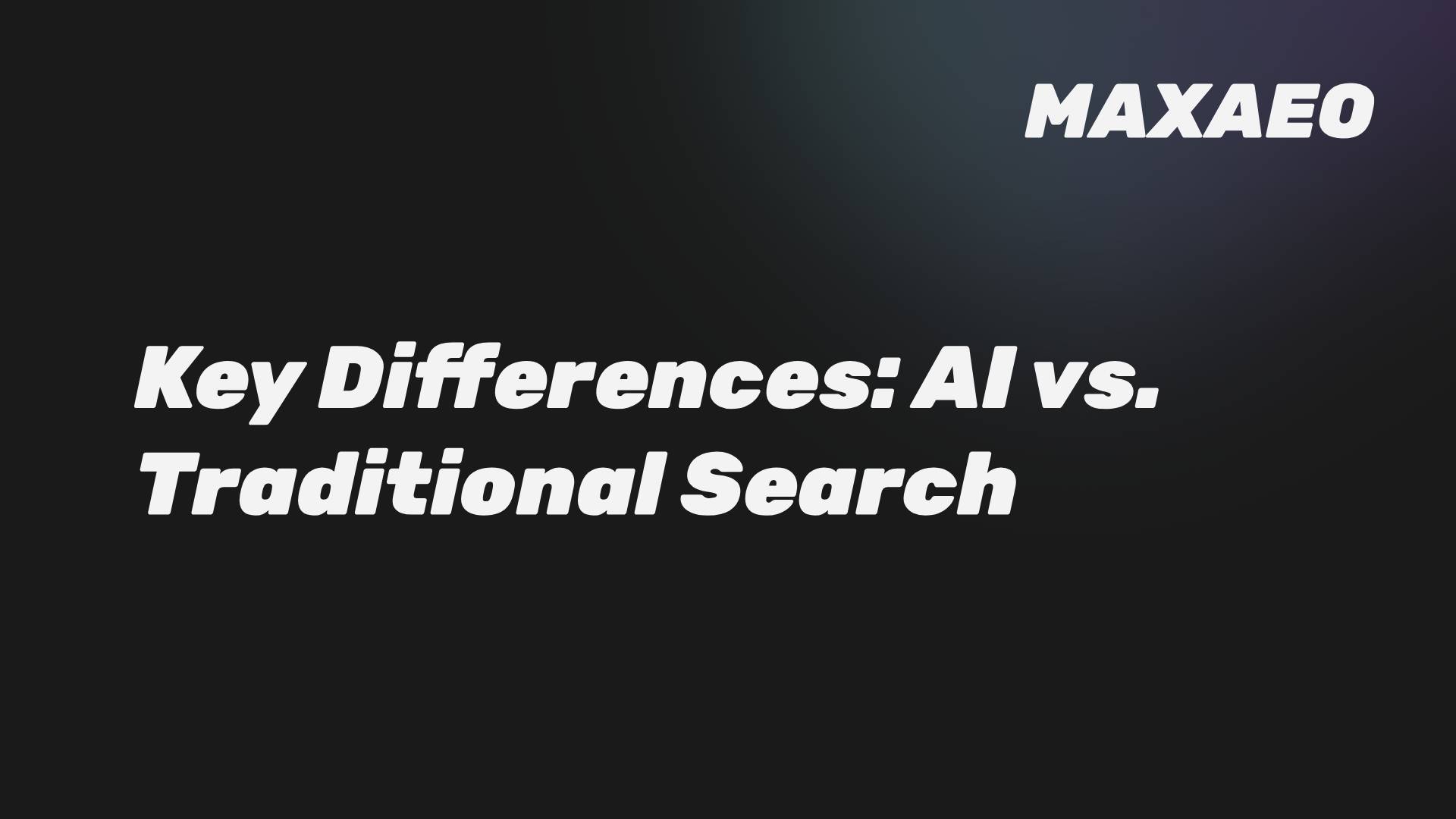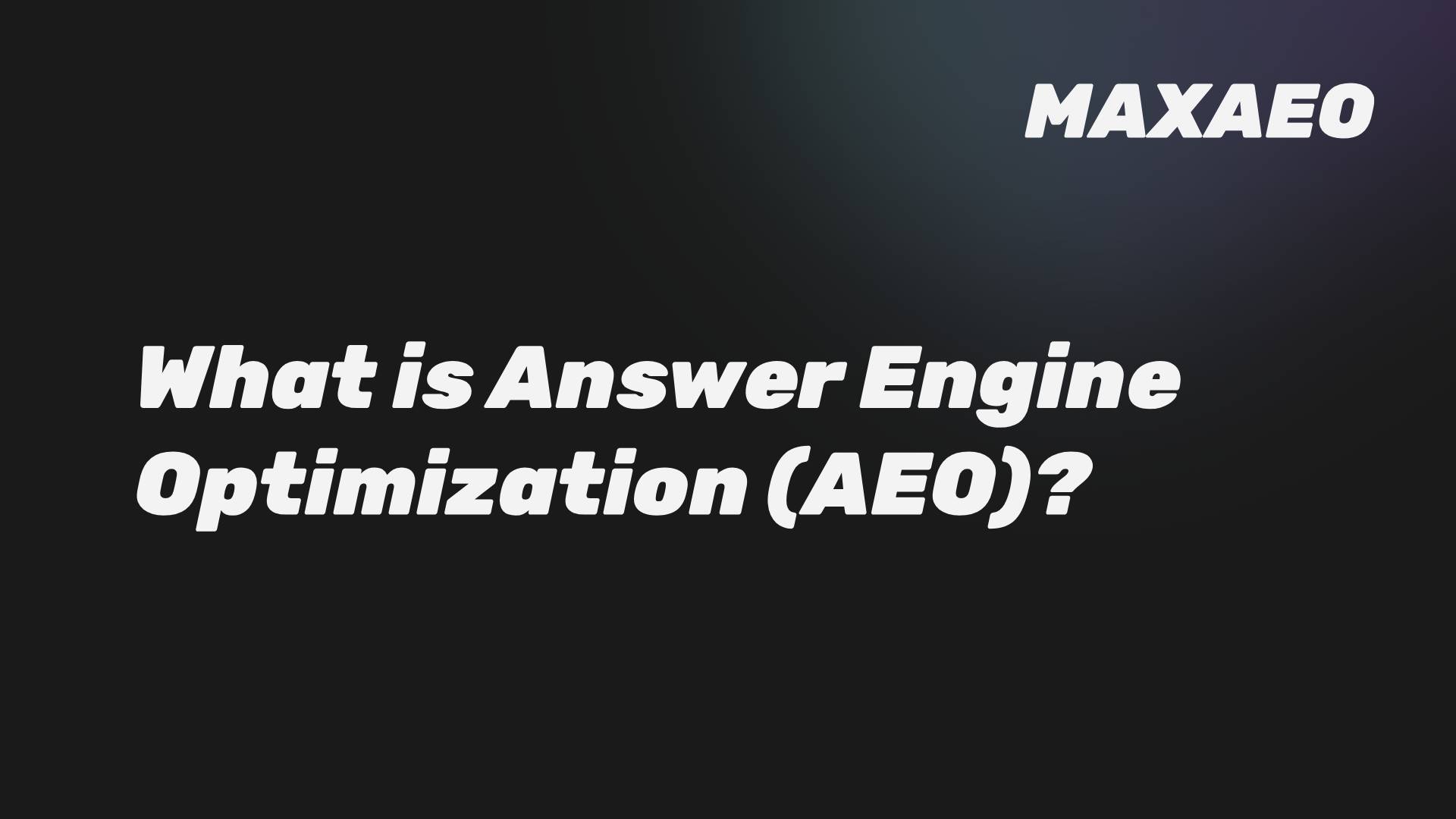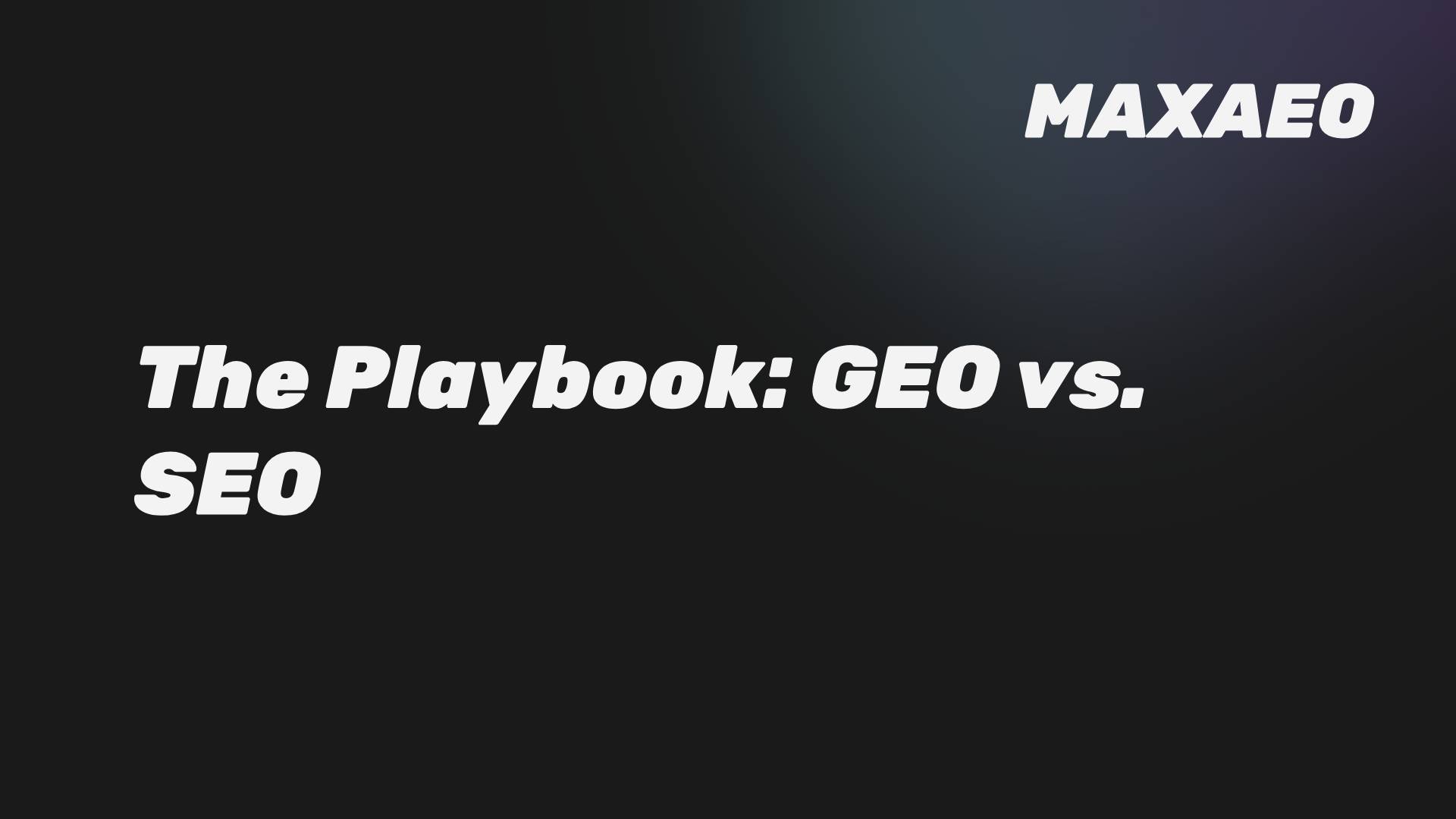· Anton Grant · Digital Marketing · 4 min read
AEO vs. SEO: Why Your B2B Marketing Strategy is Now Incomplete
Your SEO is working, but leads are down. This guide for B2B leaders explains the strategic difference between Answer Engine Optimization (AEO) and traditional SEO, and why your marketing funnel is now incomplete.
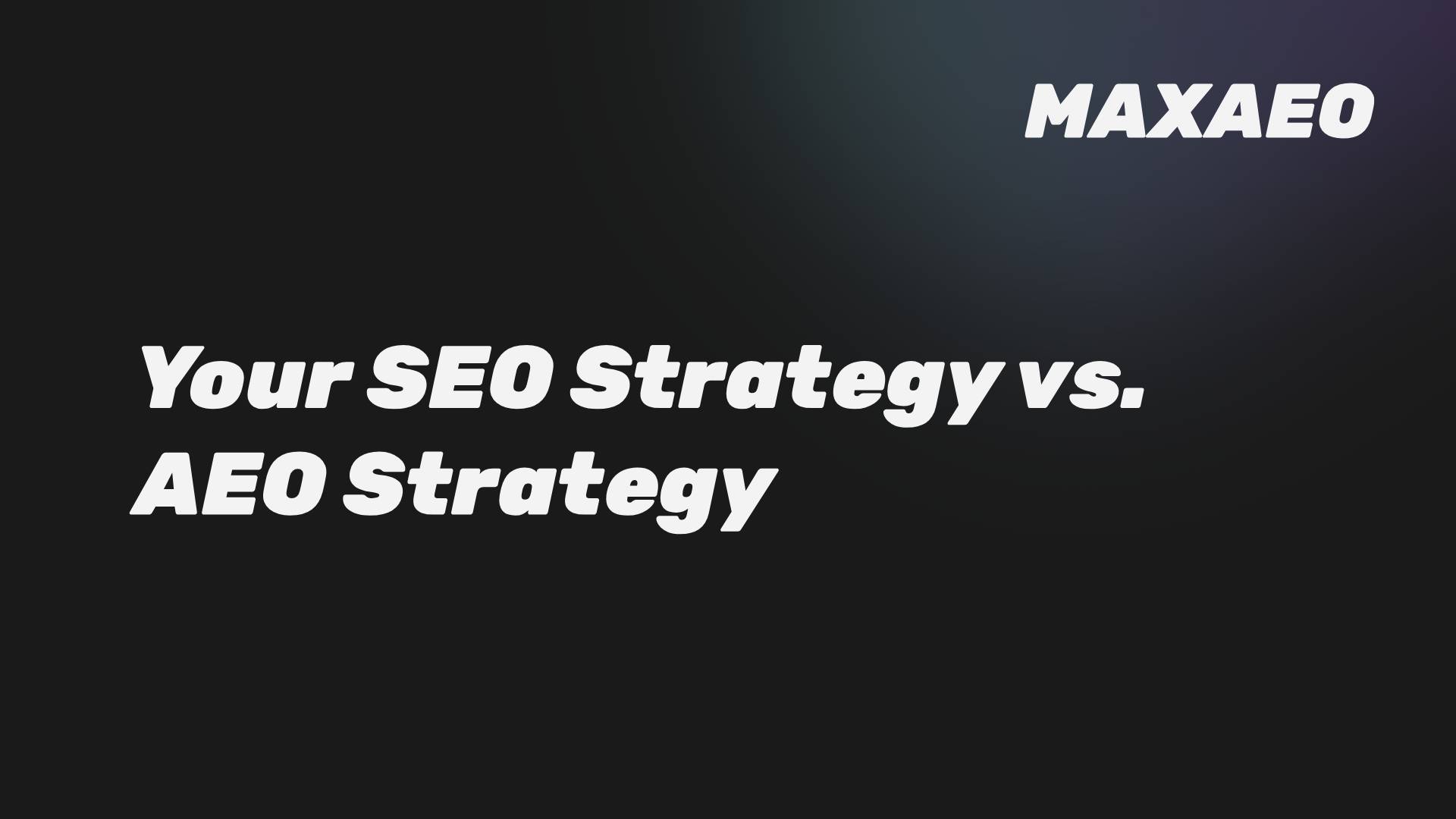
AEO vs. SEO: Why Your B2B Marketing Strategy is Now Incomplete
Your Search Engine Optimization (SEO) team is hitting its ranking goals, yet organic leads are flat or declining. This isn’t a failure of execution; it’s a sign that your strategy is incomplete. The rise of Artificial Intelligence (AI)-powered answers has created a new visibility layer where traditional SEO metrics are becoming irrelevant.
This guide provides a strategic overview for B2B leaders on the critical differences between AI and traditional search. You will learn why a strategy focused solely on ranking is now a liability and how to adapt your marketing model for a world dominated by zero-click search.
What is the Fundamental Difference Between AEO and SEO?
The fundamental difference between AEO and SEO is the objective. SEO is the discipline of attracting users to your owned properties by ranking in a list of links. AEO is the discipline of projecting your brand’s answer directly onto third-party properties, such as Google’s search results page or a ChatGPT interface.
This distinction is critical. One strategy is about driving traffic; the other is about owning the answer. In an environment where, according to Gartner, AI will eliminate 50% of organic traffic by 2028, a strategy built only on attracting clicks is designed for a world that is rapidly disappearing.
Why is This Happening Now? The Rise of the Answer Engine
The shift to AEO is a direct response to a structural change in user behavior, enabled by new technology. Users now expect immediate, direct answers, and platforms are evolving to meet that demand, creating a zero-click information ecosystem.
The Zero-Click Reality
Today, over 60% of all Google searches end without a click to a website. The answer is provided directly in an AI Overview, a featured snippet, or a knowledge panel. If your marketing goal is to drive a website visit, you are now competing for a minority of user actions.
The New AI Intermediaries
Platforms like ChatGPT and Google’s AI Overviews are becoming the new gatekeepers of information. They synthesize content from multiple sources to create a single, authoritative answer. This makes the user’s journey more efficient but introduces a new, powerful intermediary between your brand and your potential customers.
How Do AEO and SEO Strategies Compare?
While both aim to increase visibility, their methods, metrics, and mindset are fundamentally different. A strong SEO foundation is a prerequisite for AEO, as AI models use high organic rankings as a key signal of authority. However, ranking alone is no longer enough.
| Aspect | Traditional SEO | Answer Engine Optimization (AEO) |
|---|---|---|
| Strategic Goal | Win clicks by ranking high in a list of links. | Win influence by becoming the cited source in a direct answer. |
| Primary Metric | Organic Traffic, SERP Position. | AI Share of Voice, Citation Frequency, Brand Mentions. |
| Content Tactic | Target keywords in long-form content to attract users. | Structure content to provide concise answers upfront for machine extraction. |
| Technical Focus | Crawlability, Page Speed, Mobile-Friendliness. | Structured Data (Schema), Semantic Clarity, E-E-A-T Signals. |
What is the Strategic Shift B2B Leaders Must Make?
Adapting to this new reality requires a strategic pivot from a purely traffic-driven model to one centered on authority and influence. The primary question is no longer “How do we rank?” but “How do we become the trusted source the AI cites?”
From Content Creation to Answer Engineering
Your content strategy must evolve. The goal is to create assets that are not only comprehensive but are also engineered for machine consumption.
Structure for Extraction: Organize content with clear, question-based headings followed by immediate, concise answers. Prioritize Factual Density: Embed verifiable data, statistics, and expert quotes. Implement Schema Markup: Use FAQPage and HowTo schema to provide explicit, machine-readable context.
From Link Building to Authority Building
While backlinks remain important, AEO requires a broader approach to building trust. Your brand’s credibility across the entire digital ecosystem is what AI models evaluate. To learn more about this, read our Guide to Generative Engine Optimization.
Target High-Authority Platforms: Focus on earning mentions in reputable media and on trusted sites like Wikipedia and Reddit. Leverage E-E-A-T: Explicitly demonstrate your Experience, Expertise, Authoritativeness, and Trustworthiness in your content and author bios.
Conclusion: SEO is a Signal, Not the Entire Solution
Traditional SEO has become an input signal for a much larger and more complex system of information delivery. It is a critical piece of the puzzle, but it is no longer the entire solution. B2B brands that fail to expand their strategy to include AEO are optimizing for an outdated user journey and risk becoming invisible.
The future of digital marketing belongs to the brands that are not just discoverable in a list of links but are the definitive, authoritative answer wherever their customers are asking questions. This is the new, incomplete reality of SEO, and AEO is the missing piece.
Your future-proof growth strategy starts here. Let’s discuss what’s possible.
